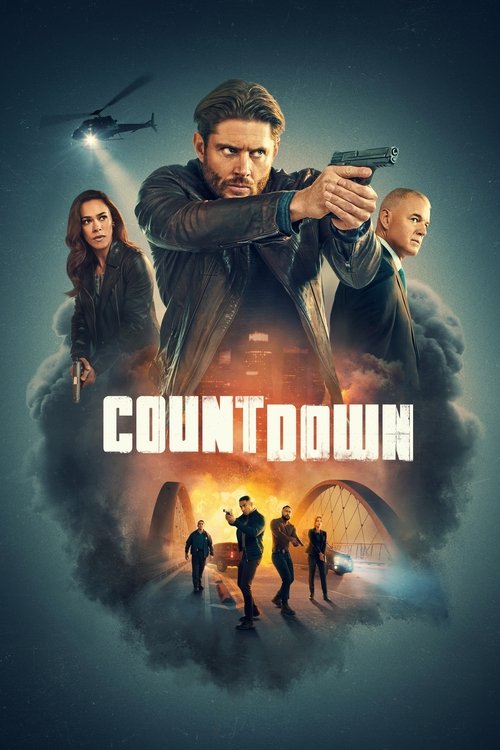
Ask Your Own Question
What is the plot?
Dexter Morgan awakens from a ten-week coma in a hospital, confused and disoriented, haunted by hallucinations of people from his past including his deceased brother Brian Moser and his father Harry Morgan, who tries to guide him. Dexter struggles to piece together what happened, recalling that he was shot in the chest by his son Harrison, who has since disappeared. Dexter learns that Harrison is in New York City and decides to leave the hospital against medical advice to find him.
Dexter arrives in New York and begins searching for Harrison, who is working as a concierge at the Empire Hotel. Harrison is trying to live a normal life but is deeply troubled by guilt over having killed a man named Foster, who was a serial rapist. Harrison nearly turns himself in to the police but is stopped by Dexter, who reveals himself to his son and urges him to keep fighting. Meanwhile, Angel Batista from Miami Metro arrives in New York to investigate the murder of Foster and offers his help to the NYPD, but he does not reveal his suspicions about Harrison, instead sympathizing with him.
Dexter takes a job as a waiter at a gala to gain access to a vault connected to a man named Prater, a detective who has been investigating serial killings in New York. Dexter is trapped inside the vault and hallucinates Brian Moser taunting him. A phone call from Quinn helps Dexter find Batista's cell phone, which he uses to call Harrison for help. Harrison sneaks into the gala but is caught by Charley, a woman connected to Prater. Dexter searches the vault and finds Prater's files on serial killers and a dossier on Charley, which he uses to blackmail her. Furious at Prater's betrayal, Charley quits and leaves New York with her mother.
Dexter deduces that the vault code is the inmate number of the man who killed Prater's parents. Prater captures Harrison and tries to kill both him and Dexter. Harrison, who has been given the drug M99 by Dexter for protection, knocks Prater out, and Dexter kills Prater. Dexter recovers his blood slides from the vault before triggering the alarm and escaping. The NYPD finds Batista's body, the murder weapon with Prater's fingerprints, and the New York Ripper's file, revealing the killer's name as Don Framt.
Dexter disposes of Prater's body by dumping it into New York Harbor. He takes Prater's files and yacht, deciding to continue hunting more targets. Dexter accepts that he will never have a normal life but believes his connections to Blessing and Harrison will help him become more human. The series ends with Dexter preparing to hunt again, embracing his dark nature while maintaining his ties to his son and allies.
What is the ending?
At the end of Dexter: Resurrection (2025), Dexter Morgan and his son Harrison evade law enforcement in New York City amid a chaotic confrontation involving multiple serial killers. Dexter is ultimately cleared of blame for a key death, while Harrison survives the violent climax. The series closes with Dexter alive and free, continuing his complex life alongside Harrison, as the web of killers and law enforcement tensions remain unresolved but subdued.
The ending of Dexter: Resurrection unfolds in a detailed, scene-by-scene narrative:
The final episodes open with Dexter and Harrison on the run in New York City, pursued by law enforcement and entangled in a dangerous network of serial killers who see Dexter as a kindred spirit. The tension escalates as Dexter tries to protect Harrison while navigating this deadly environment.
A pivotal scene reveals the aftermath of a violent confrontation where Logan, a character involved in the chaos, dies accidentally. Initially, Dexter is blamed for Logan's death, which threatens to unravel their fragile freedom. However, Angela, a key ally, intervenes by presenting evidence that Logan had attempted to kill Dexter first, supported by a bullet lodged in a cell ceiling. This shifts suspicion away from Dexter, clearing his name and allowing him to avoid arrest or prosecution.
Meanwhile, the Gemini Killer subplot reaches a climax. Gareth, revealed to be one half of the Gemini Killers twins, is exposed in a twist that explains the killers' modus operandi of killing in pairs. This revelation adds depth to the serial killer mythology surrounding Dexter's world and highlights the ongoing threat of other killers operating in the city.
As the law enforcement net tightens, Batista places a tracker on Dexter, setting the stage for a potential reveal of Dexter's true identity. This act introduces a suspenseful element, suggesting that Dexter's freedom is precarious and that the final confrontation could come at any moment.
Despite these pressures, Dexter and Harrison survive the final violent encounters. The series closes with Dexter alive, free, and still deeply entwined with his son, who shares his dark urges. The ending leaves open the possibility of future conflicts but affirms that Dexter's story continues beyond the immediate threats, maintaining his complex existence as a father and a killer.
In terms of character fates:
- Dexter Morgan remains alive and free, cleared of recent accusations, continuing his life in New York with his son.
- Harrison Morgan survives the violent events and remains with Dexter, continuing to grapple with his inherited dark impulses.
- Angela plays a crucial role in protecting Dexter by shifting blame for Logan's death.
- Gareth (Gemini Killer) is revealed as part of a twin serial killer duo, deepening the narrative's exploration of paired killers.
- Law enforcement characters like Batista remain active, with their pursuit of Dexter ongoing but temporarily stalled.
This ending emphasizes the ongoing cycle of violence and survival in Dexter's world, with the father-son dynamic central to the narrative's resolution. It avoids a definitive closure, instead portraying Dexter's life as a continuing struggle between his dark nature and his desire to protect his son.
Who dies?
Yes, several characters die in the 2025 TV show Dexter: Resurrection. Here is a list of notable deaths and their circumstances:
-
Mia Lapierre (Lady Vengeance): Mia is found hanging from the ceiling of her jail cell, apparently having taken her own life. However, there is ambiguity about her death, as the actress hinted she might return, suggesting the death may not be straightforward or final.
-
Tyler Day: Decapitated off-screen by Ronald Schmidt using a wire. His driver's license is shown as evidence of his death.
-
Four unnamed women: Strangled to death off-screen by Al Jolly using their own ponytails. The ponytails are shown as proof of their deaths.
-
Three unnamed people: Killed off-screen by Lowell, with their skins shown as evidence.
-
23 unnamed people: Also killed off-screen by Lowell, mentioned but not shown directly.
These deaths occur throughout the series, often off-screen or revealed through indirect evidence, reflecting the dark and violent world of serial killers depicted in the show. Mia's death is the most prominent and emotionally impactful, with a twist that leaves her fate uncertain. Other deaths are tied to various serial killers featured in the series, such as Ronald Schmidt, Al Jolly, and Lowell.
Is there a post-credit scene?
As of the current information available, there is no specific mention of a post-credit scene in Dexter: Resurrection. However, the show does feature end credits songs that are thematically significant. For example, in Episode 5, the end credits song is "Eat an Eraser" by Michael C. Hall's band Princess Goes, which accompanies a pivotal moment in the series where Dexter opens up to his son Harrison about his past, only to be met with rejection.
Regarding the opening credits, Dexter: Resurrection initially included spoiler-filled stingers, but the producers have announced plans to remove these spoilers in future episodes to avoid revealing key plot points.
There is no detailed description of a post-credit scene similar to those found in some other TV shows. Instead, the focus is on the narrative progression within the episodes themselves.
How did Dexter survive the gunshot from Harrison?
Dexter survived the gunshot because Harrison missed his heart. The bullet wound was severe, but the freezing temperatures in Iron Lake's snowy forest slowed down the bleeding, allowing rescuers to save him. He was rushed to the hospital and placed in a coma for 10 weeks.
Why wasn’t Dexter arrested while in the hospital?
Dexter wasn't arrested because Angela Bishop changed her story, claiming that Dexter acted in self-defense when killing Officer Logan. This revised testimony shifted the blame and made Dexter no longer a criminal threat.
What drives Harrison to commit a murder at the Empire Hotel?
The show confirms that Harrison commits a murder while working as a bellhop at the Empire Hotel, but the specific reasons behind this act are not fully detailed. It is speculated that it could be an act of self-defense or something more sinister.
Who is the 'Dark Passenger' Killer?
The 'Dark Passenger' Killer is a new antagonist introduced in the series. The trailer hints at this character, but it is unclear if they are real or a metaphorical representation of Dexter's inner demons.
How does Leon Prater’s game relate to Dexter’s redemption arc with Harrison?
Leon Prater's game could potentially interfere with Dexter's goal of reconnecting with Harrison. If Prater learns about Harrison, he might use that knowledge against Dexter, forcing them to team up or complicating their relationship.
Is this family friendly?
Dexter: Resurrection is not family-friendly due to its mature content. Here are some aspects that might be objectionable or upsetting for children or sensitive viewers:
-
Violence & Gore: The series features graphic violence, including murder scenes, blood spatter, and dismemberment. These scenes are consistent with the dark nature of the Dexter franchise.
-
Language: Strong profanity is used throughout the series, with frequent use of coarse language in high-stress and emotional situations.
-
Mature Themes: The show deals with dark psychological themes, including trauma, vigilantism, guilt, and complex moral decisions. Flashbacks of past abuse and mental health struggles are woven into the story.
-
Frightening & Intense Scenes: The series includes severe and intense moments, often involving dangerous situations with serial killers. These scenes can be disturbing and unsettling.
-
Sex & Nudity: While not the main focus, mild sexual content or nudity may appear in some episodes.
Overall, the show is rated TV-MA, indicating it is intended for mature audiences only.































